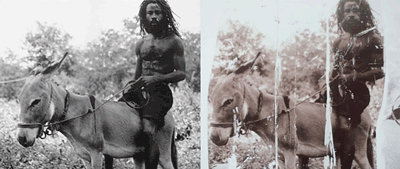In today’s technology saturated world, the question of artistic ownership is arising time and time again. With the Internet, social media, television, video games and countless other digital mediums readily accessible with the touch of a button, the resources available to artists in this day and age are seemingly never-ending. Now, more than ever, the art world is caught in a flurry of controversy over the terms of appropriated artwork and the fine line between forgery and fair use.
According to ARTNews editor Barbara Pollack, “Appropriation covers a broad array of practices – reworking, sampling, quoting, borrowing, remixing, transforming, adapting – that focus on one person taking something that another has created and embracing it as his or her own” (Pollack,“Copy Rights”, 76). Interestingly enough, the term “appropriation” is one that artists tend to reject, as most are insistent that they have transformed found images into a creation very much their own. Pop artists, in particular, have been essential to this discourse on appropriation, shamelessly drawing from commercial imagery and openly questioning the definition of originality. However, even these famed pop artists cannot always escape the law; Andy Warhol and Robert Rauschenberg have both had to pay other artists licensing fees for “borrowing” their imagery.
This question of artistic ownership goes back to the 1500’s, to the days of Albrecht Dürer, who sued Marcantonio Raimondi for making prints after his paintings and using his monogram. Curator James Pilgrim states, “Today, five centuries later [from Dürer’s lawsuit], courts differentiate between that kind of forgery and appropriation art, permitting the latter if it falls under the “fair use” exception to the copyright law, that is, if it can be proved that the appropriator transformed the original material as a way of commenting on, satirizing, or criticizing the source” (Pollack,“Copy Rights”, 79).

The most recent controversy surrounding appropriated artwork involves artist Richard Prince, who was (successfully) sued by French photographer Patrick Cariou. Prince used photographs of Rastafarians from Cariou’s 2000 book Yes Rasta in his “Canal Zone” series. This series was shown at the Gagosian Gallery in New York in 2008, with the entire show bringing in around $10 million. While Prince claimed that he borrowed the images under the “fair use” exemption to the Copyright Act, the judge was not convinced. Prince is currently in the process of appealing this decision, gaining support from organizations such as The Andy Warhol Foundation, Google, and the Association of Art Museum Directors. The results of this appeal remain to be seen, but this case has certainly drawn attention to issues of ownership and originality, bringing forth the realization that perhaps not all is fair in art and appropriation.
Information obtained from:
Pollack, Barbara. “Copy Rights.”ARTnews, March 2012.
